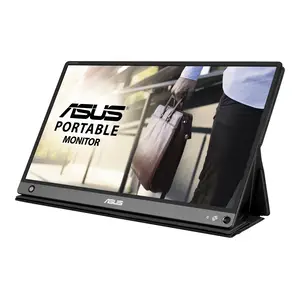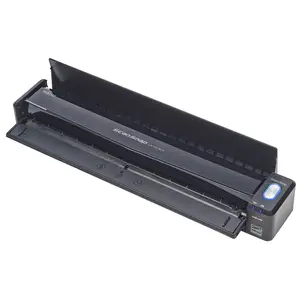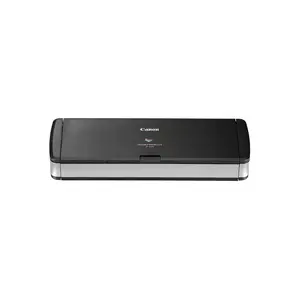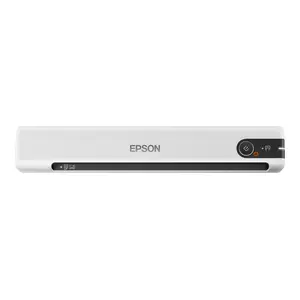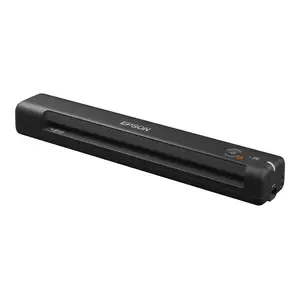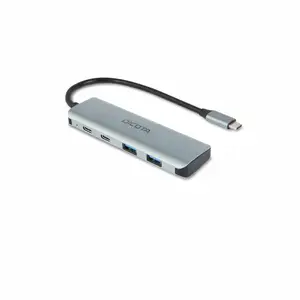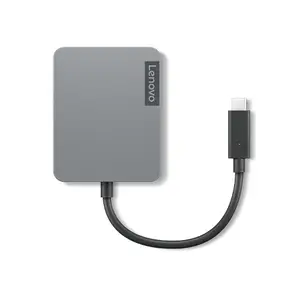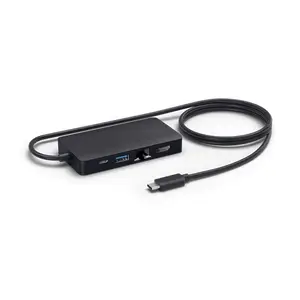Why smart technology on the go makes all the difference
The mobile workspace goes far beyond just a laptop. Whether it’s dealing with piles of paperwork or unstable hotel Wi-Fi – the right equipment doesn’t just help you cope, it empowers you to take control. Those who rely on well-designed mobile companions gain independence, flexibility, and efficiency – even outside traditional office environments. And they impress clients and business partners with technology that performs when it matters most.
Five exceptional must-haves at a glance
Here are five products that make every business trip smarter, more productive, and more enjoyable.
Easily expand your digital workspace
Easily expand your digital workspace
Effortlessly digitize documents on the go
Effortlessly digitize documents on the go
Stay connected with ease.
Stay connected with ease.
Get your power outlet to go.
Get your power outlet to go.
When technology runs smoothly, so does business
Business trips are most successful when the technology in the background works reliably – discreetly yet powerfully. Choosing the right devices lays the foundation for focused work on the go. This way, your tools stay in the background, and your attention remains where it matters most: on your business.
Business Trip: Frequently asked questions (FAQs)
1. How should I plan my tech setup for a business trip with an unpredictable itinerary?
It’s best to prepare a “backup kit” with essential accessories (e.g., adapter, USB-C/HDMI cable, charging cable) and keep everything organized in a dedicated tech pouch or backpack compartment. This helps avoid situations where you’re missing the right cable or connector on the spot.
2. When is it worth investing in travel-specific equipment, and when is a basic setup enough?
If you travel frequently - for example, more than 4–5 times per year - investing in higher-quality gear (like a strong power bank, reliable hub, or travel router) pays off. For occasional trips, a simple kit (charger, adapter, necessary cables) is usually sufficient.
3. How can I keep my data secure when working outside the office (e.g., in hotels or airports)?
Use a VPN or secure connection, especially on hotel or public Wi-Fi.
Consider encrypted or password-protected storage when handling sensitive documents.
Back up important files before the trip and regularly during your travels.
4. How should I handle slow or unstable internet during a trip?
Carry a mobile Wi-Fi router or have a data plan ready for hotspotting. Download key files in advance so you can work offline if needed. Also check if your hotel offers high-speed or premium Wi-Fi options.
5. What should I do if I realize during a meeting or presentation that I don’t have the right port or cable?
Before the trip, verify what type of connection you’ll need (HDMI, USB-C Alt Mode, DisplayPort) and bring the appropriate adapter or a universal multi-hub. It’s often best to have a versatile hub plus a couple of extra cables.
6. How does proper tech packing improve travel comfort, and what should be kept separate?
Use a backpack or travel bag with a padded laptop section and protective sleeves for devices. Keep your cables organized (e.g., using cable organizers or pouches), making airport security checks and unpacking much smoother.
7. What should I consider when choosing a power bank for laptops and other devices while traveling?
Look for a power bank with USB-C Power Delivery (PD) of at least 60W so it can charge a laptop, not just a phone. A capacity of 20,000 mAh or more is ideal for working a full day without access to outlets.





